
| 
|
| 28th Infantry DI | DI on Garrison Cap |
| The design was approved September 27, 1923. The rampant lion was from the arms of Picardy, the site of the unit's World War One service. | |
Distinctive insignia (DIs) are an important class of unit insignia used by the United States Army. They take the form of a small enameled coat of arms, which often depict symbols of the history of the unit they represent and the sometimes the motto of the unit. Whereas shoulder sleeve insignia are used for larger units, such as divisions, distinctive insignia were used along side of them to indicate the smaller component units, such as regiments or battalions. I will not try to present images of all the hundreds of distinctive insignia that might have seen use 1941-1945. However, I do wish to provide an introduction to this class of insignia.

|
| Enlisted Man Wearing DIs 6850th (Nürberg/Nuremberg Trials) Internal Security Detachment |
46. Regimental Insignia and Trimmings-a. Subject to the approval of the War Department and as a means of promoting esprit de corps, each regiment or similar organization is authorized to adopt and wear, as a part of the uniform, distinctive insignia or trimmings. Distinctive insignia should bear the regimental badge or coat of arms or similar device having historical significance connected with the regiment, such as the ornament of the regiment when originally organized or that worn is some prior war. If trimmings are adopted, the color should have some historical significance connected with the regiment. Colored trimmings will not be worn with the cotton service or white uniforms. b. Where insignia or trimmings other than those indicated above are desired, the reason for variation must be made plain when the approval of the War Department is requested. c. If a distinctive insignia of trimming is adopted, it must be worn by the entire personnel of the regiment and the expense of adopting and wearing it must be borne by the personnel, as personnel, as public funds are not available for this purpose.
During the next two decades DIs were approved for most regular and national guard regiments and separate battalions. There were more than a few rules to be followed. For example, no part of the great seal of the United States, of the arms, seal or flag of any state or foreign county was to appear in the design. All figures appearing in the design must face right. Distinctive insignia were worn on the front of the campaign hat, on the left side of the overseas cap when that was reintroduced, on the shoulder loops of officer's coats and on the lapels of enlisted men's coats.
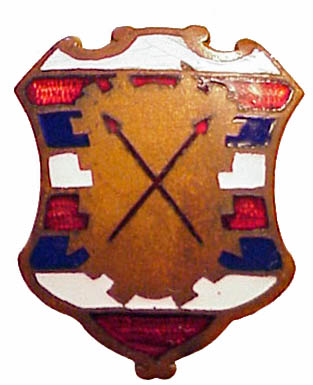
| 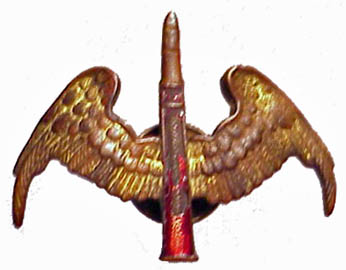
| 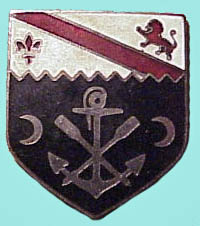
| 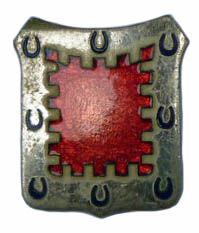
| 
|
| 16th Coast Artillery | 64th Coast Artillery (Anti-Aircraft) | 1st Engineer Bn. | 8th Engineer Sq. | 101st Engineer Bn. |

| 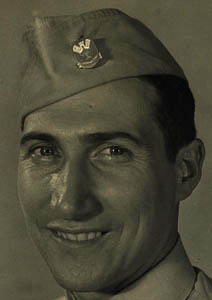
|
| AAF Technical Schools DI | DI on Khaki Garrison Cap |
| A large numbers of Army Air Force personnel passed through the technical schools after finishing basic training in order to acquire the skills necessary for a modern Air Force to function. | |

| 
| 
| 
| 
|
| 2nd Field Artillery | 13th Field Artillery | 17th Field Artillery | 110th Field Artillery | 131st Field Artillery |

| 
| 
| 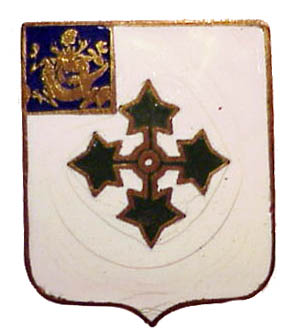
| 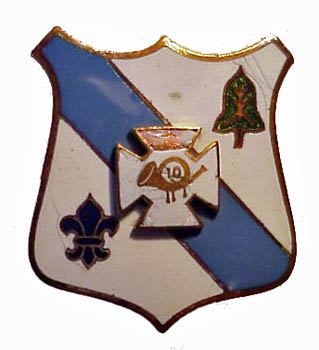
|
| 12th Infantry | 18th Infantry | 22nd Infantry | 47th Infantry | 106th Infantry |

| 
| 
| 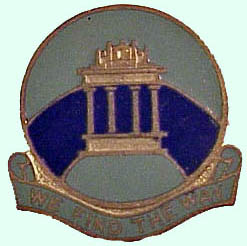
|
| 115th Infantry | 175th Infantry | 315th Infantry | 1302nd Service Unit |
With the outbreak of World War Two DIs continued in use until it proved to be a burden to the Quartermaster Corps. With the large number of new units formed all requesting approval for DI designs, there was a major backlog. In addition, DIs used brass, which was a strategic material. On December 29, 1942 it was announced that the manufacture of distinctive insignia was to be discontinued and that future requests would only be considered under very special circumstances. On January 2, 1943 War Department Circular Number Six absolutely suspended the manufacture of existing DIs and the approval of new DIs designs for the duration of the war. It did not discontinue wearing of DIs that had been produced. There is evidence that units circumvented the regulations and had DIs made out of plastic and other materials. Groups of period insignia saved by veterans often include DIs although it is difficult to know if these were made prior to, during or after the lifting of the ban on manufacture. Certain DIs display a unit motto, which can be an aid in identification. The American Society of Military Insignia Collectors offers a useful catalog of mottoes. DIs of the World War Two era and prior sometimes have the name of the manufacturer on the back. They are commonly have either screw and post or pin attachments. Postwar DIs are often clutch backed and have a code marking for the manufacturer; for example, "D-22" that indicates the Denmark Co. of New York. DIs are still in use by the United States Army.